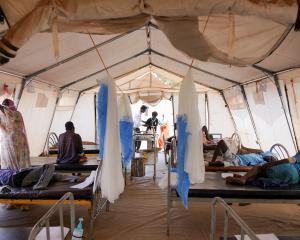Last week, it announced that it can now make nuclear warheads small enough to fit on a missile. If both those claims are true, then it can now deliver a nuclear weapon on the United States, at least in theory, but there is always some doubt about North Korean claims.
While a defence official in Pyongyang said this week the country's nuclear programme had ''long been in the full fledged stage of miniaturisation'', some Western defence experts think the North Koreans have not really mastered the art yet.
But General Curtis M. Scaparrotti, the senior US military commander in South Korea, thinks otherwise.
''I believe [the North Koreans] have the capability to have miniaturised the device at this point, and they have the technology to potentially actually deliver what they say they have,'' Gen Scaparrotti said last October. But to be sure that the miniaturised weapon actually works on a ballistic missile, North Korea would have to test fire it to see if it survives the heat and vibration of re entering the atmosphere in working order.
It has not yet done that. Others think the footage of the submarine launch may have been faked. The missile emerges from the sea, sure enough, with the Maximum Leader looking proudly on, but Kim Jong un was obviously Photoshopped in, and in one shot there seems to be a barge floating on the surface near the missile's exit point.
However, let us assume for a moment that both claims are true - because they will be sooner or later. What does North Korea intend to do with its nuclear weapons? And why is it trying so urgently to persuade its enemies that they are ready to use now?
The rational and conventional answer to the first question is that Pyongyang's nukes are solely intended to deter the United States from using nuclear weapons on North Korea.
The United States has long standing military alliances with both South Korea and Japan, and it has never said that it would abstain from using nuclear weapons if there was a war between North Korea and its neighbours.
In this rational world, having enough nuclear weapons to deter the United States from going nuclear would give North Korea a major advantage in the event of a ground war in the Korean Peninsula.
Its army is much bigger than the South Korean and US ground forces facing it, and it might even manage to overrun South Korea in a non nuclear war. Or at least, it may believe it could.
How many North Korean nuclear weapons would be enough to deter the United States from using its own nukes, in this context? A dozen would probably do it, and Prof Siegfried Hecker, of Stanford University, a former director of the Los Alamos National Laboratory, thinks that North Korea probably now has that many, ''half likely fuelled by plutonium and half by highly enriched uranium''.
But rationality has not been the outstanding feature of politics in North Korea recently. In the past three years, Supreme Leader Kim Jong un has purged most of the men who worked closely with his father, Kim Jong il, and many have been executed. Whole families have been murdered, including some with links by blood or marriage to Kim's own.
The crimes imputed to the victims and the methods of killing also grow increasingly bizarre. South Korea's National Intelligence Service reported recently that North Korea's defence minister, General Hyon Yong Chol, was executed last month for falling asleep during a meeting where Kim Jong un was present.
Again according to the NIS, the weapon used to execute Gen Hyon was a ZSU23 4, a Russian made tracked anti aircraft vehicle. It mounts four linked autocannons that fire 23mm shells at the rate of 3400 rounds a minute. If that report is true, it would have been hard to find enough of Gen Hyon to bury.
The impression this all creates of political chaos and utter uncertainty in the North Korean capital may be misleading. The old Soviet regime was never more monolithically stable than at the height of Stalin's purges in 1936 38. But at the moment Kim's regime certainly LOOKS unstable when viewed from the outside. There are no safe assumptions, including assumptions about the rationality of the leadership.
So we cannot just assume North Korea's nukes are purely defensive, or that Kim Jong un, after 28 years of living in a gilded cage and three and a half years of absolute power, has been adequately instructed in the theories of nuclear deterrence that have become orthodox in older nuclear weapons states. Nor is anybody in the North Korean military hierarchy going to try to instruct him now, if he is ignorant in such matters.
The simple truth is that the rest of the world does not know what is happening in North Korea at the moment. The mystery has deepened with the abrupt last minute cancellation of United Nations Secretary general Ban Ki moon's scheduled visit to North Korea. We will have to wait to find out what is really going on - but meantime military forces all over northeastern Asia are undoubtedly on high alert.
Gwynne Dyer is an independent London journalist.












